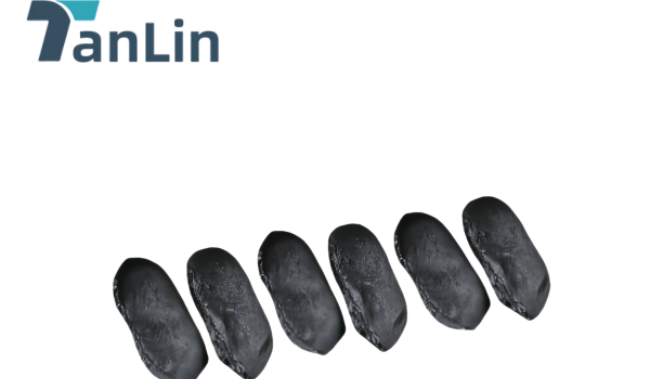
The main reasons why the electrodes of a submerged arc furnace do not consume and cannot be lowered are as follows:
- Raw Material and Furnace Condition Factors
- Unreasonable Particle Size of Raw Materials: If the particle size of the raw materials charged into the furnace is too large, the resistance around the electrodes is relatively small, resulting in uneven current distribution. This leads to insufficient heat generation at the electrode tips, preventing the electrodes from being consumed adequately. For example, when smelting ferrosilicon, if the particle size of silica and other raw materials is too large, the electrodes cannot penetrate the burden layer effectively, and the heat is difficult to transfer to the electrode tips, thus affecting the electrode consumption.
- Poor Permeability of the Furnace Charge: When the permeability of the furnace charge is poor, the gas in the furnace cannot be discharged smoothly, and a relatively high pressure is likely to form in the furnace, hindering the lowering of the electrodes. At the same time, poor permeability will affect the chemical reactions in the furnace, making it impossible for the electrodes to be consumed in a timely manner. For instance, if the furnace charge has excessive moisture or agglomeration before being charged into the furnace, it will reduce the permeability of the furnace charge.
- Low Furnace Temperature: If the temperature inside the furnace fails to reach the high-temperature conditions required for the normal consumption of the electrodes, the electrodes will be difficult to be ablated and consumed at the tips. This may be caused by insufficient power supply, excessive heat dissipation of the furnace lining, etc. For example, if the power of the transformer of the submerged arc furnace is insufficient, it cannot provide enough electrical energy to maintain a high temperature in the furnace.
- Electrode Itself Factors
- Electrode Quality Issues: The quality of the electrodes themselves has a great impact on their consumption. If the roasting quality of the electrodes is not good, and the internal structure is loose with a relatively large resistance, it will cause excessive heat to concentrate on the electrode body during operation instead of being consumed at the tips, thus affecting the normal lowering of the electrodes. In addition, an unreasonable formula of the electrode paste, improper content of the binder, etc., will also affect the performance and consumption of the electrodes.
- Malfunction of the Electrode Lowering Device: The electrode lowering device is a key equipment for controlling the lowering of the electrodes. If there are problems such as jamming and wear in the mechanical part of the lowering device, or if there are failures in the electrical control system, resulting in the normal execution of the lowering action being impossible, the electrodes cannot be lowered at the predetermined speed. For example, if the brake device cannot be released or tightened properly, it will affect the lowering of the electrodes.
- Hard Break or Soft Break of the Electrode: During the use of the electrodes, hard breaks (fracture of the electrode body) or soft breaks (poor sintering of the electrode paste, causing it to slide down inside the electrode cylinder) may occur. Once a hard break or a soft break occurs, the working state of the electrodes will be seriously affected, which may lead to the electrodes not being consumed and unable to be lowered normally. Hard breaks are usually caused by excessive mechanical stress or thermal stress on the electrodes, while soft breaks are related to the sintering process and operation of the electrode paste.
- Operation and Process Factors
- Excessively Long Electrode Working Length: If the working length of the electrodes is set too long, exceeding the reasonable range, the resistance of the electrodes in the furnace will increase, and the current density will decrease, resulting in insufficient heat generation at the electrode tips, and the electrode consumption will slow down. At the same time, the excessively long electrodes are likely to shake due to the action of mechanical forces, affecting the stability and normal consumption of the electrodes.
- Uneven Current Distribution: If the three-phase current of the submerged arc furnace is unevenly distributed, the working load of one phase of the electrodes may be too large or too small. The electrodes of the phase with an excessive load may be overheated and damaged too quickly, while the electrodes of the phase with an insufficient load may not be consumed due to insufficient heat. This may be caused by factors such as unbalanced impedance of the short-circuit network system and improper adjustment of the electrode position.
- Unreasonable Smelting Process Parameters: Various process parameters in the smelting process, such as smelting time, charging speed, and burden composition, have an important impact on the consumption and lowering of the electrodes. If the smelting time is too short, the heat accumulation at the electrode tips is insufficient, and the electrodes cannot be effectively consumed; if the charging speed is too fast, the burden layer in the furnace will be too thick, hindering the lowering of the electrodes. In addition, an inappropriate proportion of various raw materials in the burden composition will also affect the chemical reactions in the furnace and the working state of the electrodes.
Tanlin Carbon focuses on technology in its electrode paste process. By adopting advanced production processes and strict quality control systems, it ensures the high quality of the electrode paste. From the selection of high-quality raw materials to the precise control of the sintering process, every step is carefully managed. This approach effectively eliminates problems caused by product quality, ensuring stable operation of the electrodes in the submerged arc furnace and reducing the occurrence of situations where the electrodes do not consume and cannot be lowered. When encountering the situation where the electrodes of the submerged arc furnace do not consume and cannot be lowered, it is necessary to comprehensively analyze the above various factors, identify the specific causes, and take corresponding measures to solve them.
